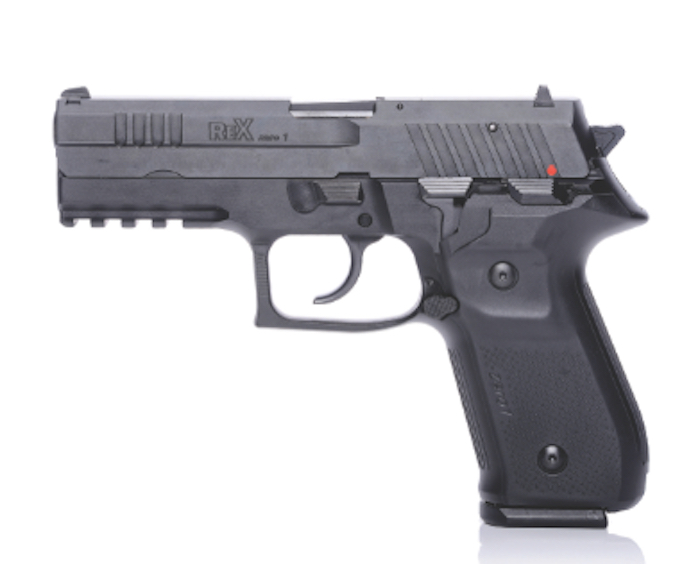
Some firearms have firing pins, some have strikers; what’s the difference?
Firing pins and strikers are both responsible for discharging a firearm. They are very similar and some firearms manufacturers use both terms interchangeably.
Generally speaking a firing pin transfers the energy of a falling hammer to the primer of a cartridge; much like a chisel does to a piece of wood. When a gun is cocked, the hammer (which can be either internal or external) is at rest between a compressed spring and the trigger mechanism. When the trigger is pressed, the hammer falls and hits the firing pin which in turn hits the primer. A striker, on the other hand, is not hit by a hammer; instead it is propelled forward by it’s own spring.
There are some external hammers (most notably on some revolvers) that have a pointed face which directly hits the primer; in this case it can be called either a “firing pin” or a “striker” depending on the manufacturer’s preference.
What is the difference between Single Action and Double Action?
These terms define how the trigger affects the hammer or striker.
In a Single Action (SA) firearm, pressing the trigger performs ONE action: it releases the hammer/striker. Each subsequent shot requires the hammer/striker to be re-cocked, which many firearms do as a part of cycling the action. The trigger press on SA guns tends to be very light. The vast majority of long guns (rifles and shotguns), and many handguns, are SA.
Pressing the trigger in a Double Action (DA) firearm performs TWO actions: first it cocks the hammer/striker, and then it releases it. This extra action means that DA triggers tend to have a long, heavy press. Most DA handguns are also capable of firing in SA mode and they are often referred to as DA/SA. (Note: you may notice that in the case of a DA revolver, pressing the trigger also rotates the cylinder; but this does not turn it into a Triple Action!)
If a semi-automatic handgun is SA or DA/SA, the slide reciprocates and cocks the hammer/striker each time the gun is fired. This means that the trigger has only one job to do (the release) so it will fire in SA mode. The difference between SA and DA/SA semi-autos is only noticeable if the firearm has been de-cocked; in this situation, the SA firearm must be manually cocked before the trigger will work, whereas the first press of the DA/SA firearm’s trigger will be Double Action and will do the cocking for you.
Some handguns are not able to be fired in SA mode at all and these are called Double Action Only (DAO). They have a consistently long and heavy trigger press and are commonly used for law enforcement.
So, is my Glock SA or DA?
When the slide cycles on some striker fired handguns, like Glocks, it partially cocks the striker. The trigger press finishes the cocking process and then releases the striker. So, technically the trigger is performing two actions and could be considered DA; but because it doesn’t have the long, heavy press of traditional DA guns, it’s often called SA. Personally I find the triggers on these types of guns to be fairly unique, so I lump them into their own category: “striker fired guns”!
Is it OK to dry fire my gun?
“Dry firing” means to fire your gun with nothing in the chamber and it can be a great training tool for trigger control, but many people are concerned about damaging their guns.
When you dry fire a centrefire gun, there is no primer to absorb the impact of the firing pin/striker, so it hits the housing or inside of the bolt face instead. Whilst this could risk damage to old or poorly made guns, it is unlikely to harm quality, modern firearms. I dry fire all of my centrefire guns on a regular basis as part of my training regime and I have never noticed any ill effect. If you’re in doubt, contact your firearm’s manufacturer, or use quality snap caps or dummy ammunition.
Due to the position of the firing mechanism on rimfire guns, dry firing could chip the chamber or cause the firing pin to snap. So, if you have a rimfire firearm – do not dry fire it!
If I leave my magazines full, will it damage the springs?
Back in the day, when I was a soldier, there was a school of thought which suggested that if you leave a magazine full for long periods of time, it will weaken the spring which could lead to feeding malfunctions. The latest scientific thinking disagrees. It is now generally understood that spring wear is caused by repeated compressing and relaxing, not continuous compression. So, although many military units and law enforcement departments still have SOPs in place to ensure that magazines are rotated and springs are eased, your magazines should not be damaged if you store them full.